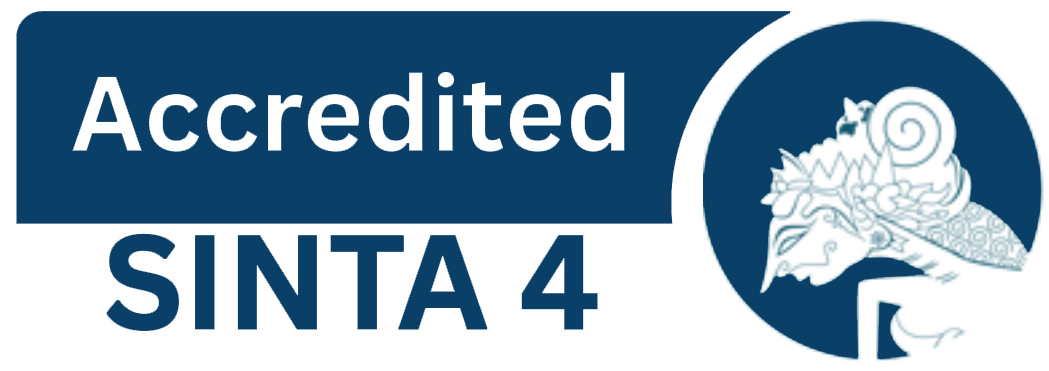ANALISIS EFEKTIVITAS MODEL PEMBELAJARAN BLENDED LEARNING DITINJAU DARI HASIL BELAJAR GEOMETRI MAHASISWA GURU SEKOLAH DASAR
DOI:
https://doi.org/10.22460/collase.v5i1.9962Keywords:
blended learning, geometry learning outcomesAbstract
The purpose of this study was to analyze the effectiveness of the blended learning model in terms of student geometry learning outcomes. This type of research is a quasi-experimental quantitative research with a one-group pretest-posttest design. The sample of this research was 36 students who were taken based on cluster random sampling technique. The data collection instrument in this study used multiple-choice questions as many as 20 mathematics questions on geometry material. The data analysis techniques were normality test, difference test in the average pretest and posttest with the Paired Samples Test statistical test, the test for the increase in the pretest result with the posttest (N-Gain), and finally the effect size test. The results showed that the pretest and posttest data were normally distributed. The paired sample test shows the results of sig. (0.043) <0.05, it means that there is a difference between the average pretest and posttest scores. Then the n-gain test was carried out with a score of 0.196 which was in the low category. This means that the pretest and posttest scores have a low level of improvement. And the results of the last test with an effect size test with a score of d = 0.47, which means that the blended learning model has a weak effect on student geometry learning outcomes.
References
Abdullah, W. (2018). Model Blended Learning Dalam Meningkatkan. FIKROTUNA: Jurnal Pendidikan Dan Manajemen Islam, 7(1), 855–866. ejournal.kopertais4.or.id/madura/index.php/fikrotuna/article/download/3169/2359/
Altay, I. F., & Altay, A. (2019). A Review of Studies on Blended Learning in EFL Environment. International Journal of Curriculum and Instruction, 11(1), 125–140. https://files.eric.ed.gov/fulltext/EJ1217924.pdf
Amin, A. K. (2017). Kajian Konseptual Model Pembelajaran Blended Learning berbasis Web untuk Meningkatkan Hasil Belajar dan Motivasi Belajar. Jurnal Pendidikan Edutama, 4(2), 51–64.
Astuti, P., & Febrian, F. (2019). Blended Learning: Studi Efektivitas Pengembangan Konten E-Learning Di Perguruan Tinggi. Jurnal Tatsqif, 17(1), 104–119. https://doi.org/10.20414/jtq.v17i1.972
Azwar, S. (2004). Metodologi Penelitian. Pustaka Pelajar.
Bibi, S. (2015). Efektivitas Penerapan Blended Learning Mata Kuliah Algoritma Dan Pemrograman. Jurnal Pendidikan Informatika Dan Sains, 4(2), 274–286.
Boampong, A. A. (2020). Towards a faculty blended learning adoption model for higher education. Education and Information Technologies, 25(3), 1639–1662. https://doi.org/10.1007/s10639-019-10019-z
Cohen, J. (1988). Statistical Power Analysis for the Behavioural Science (2nd Edition). In Statistical Power Anaylsis for the Behavioral Sciences. Routledge Academic.
Erdem, M., & Kibar, P. N. (2014). Students’ opinions on facebook supported blended learning environment. Turkish Online Journal of Educational Technology, 13(1), 199–206.
Fauzi, A., & Rahmatih, A. N. (2021). E-Learning Berbasis Moodle Sebagai Media Pembelajaran Matematika Ditinjau Dari. JPMI-Jurnal Pembelajaran Matematika Inovatif, 4(6), 1543–1550. https://doi.org/10.22460/jpmi.v4i6.1543-1550
Fitri, E., Ifdil, I., & S., N. (2016). Efektivitas layanan informasi dengan menggunakan metode blended learning untuk meningkatkan motivasi belajar. Jurnal Psikologi Pendidikan Dan Konseling: Jurnal Kajian Psikologi Pendidikan Dan Bimbingan Konseling, 2(2), 84. https://doi.org/10.26858/jpkk.v2i2.2250
Fuller, L. (2021). Negotiating a New Blend in Blended Learning: Research Roots. Inquiry, 24(1), 5–7. https://commons.vccs.edu/inquiry
Hamad, M. M. (2015). Blended Learning Outcome vs. Traditional Learning Outcome. International Journal on Studies in English Language and Literature (IJSELL), 3(4), 75–78. https://www.researchgate.net/profile/Mona-Hamad-4/publication/283209693_Blended_Learning_Outcome_vs_Traditional_Learning_Outcome/links/562df90d08aef25a24432332/Blended-Learning-Outcome-vs-Traditional-Learning-Outcome.pdf
Khoiroh, N., Munoto, & Anifah, L. (2017). Pengaruh Model Pembelajaran Blended Learning dan Motivasi Belajar Terhadap Hasil Belajar Siswa. Jurnal Penelitian Ilmu Pendidikan, 10(2), 97–110.
Lakens, D. (2013). Calculating and reporting effect sizes to facilitate cumulative science: A practical primer for t-tests and ANOVAs. Frontiers in Psychology, 4(NOV), 1–12. https://doi.org/10.3389/fpsyg.2013.00863
Ma, L., & Lee, C. S. (2021). Evaluating the effectiveness of blended learning using the ARCS model. Journal of Computer Assisted Learning, 37(5), 1397–1408. https://doi.org/10.1111/jcal.12579
McGee, D. E., & Poojary, D. P. (2020). Exploring Blended Learning Relationships in Higher Education Using a Systems-Based Framework. Turkish Online Journal of Distance Education, 21(4), 1–12. https://doi.org/10.17718/TOJDE.803343
Sari, M. (2014). Blended Learning, Model Pembelajaran Abad ke-21 di Perguruan Tinggi. Jurnal Ta’dib, 17(2), 126–136. https://doi.org/10.19109/tjie.v24i2.4833
Setiawan, R., Mardapi, D., Pratama, A., & Ramadan, S. (2019). Efektivitas blended learning dalam inovasi pendidikan era industri 4.0 pada mata kuliah teori tes klasik. Jurnal Inovasi Teknologi Pendidikan, 6(2), 148–158. https://doi.org/10.21831/jitp.v6i2.27259
Sundayana, R. (2016). Statistika Penelitian Pendidikan. Alfabeta.
Xu, Z., Yuan, H., & Liu, Q. (2021). Student Performance Prediction Based on Blended Learning. IEEE Transactions on Education, 64(1), 66–73. https://doi.org/10.1109/TE.2020.3008751
Yana, D., & Adam. (2019). The Efect Of Using Lms Platforms As Learning Media Based Blended Learning Toward Students ’ Learning Achievement. Dimensi, 8(1), 1–12.



